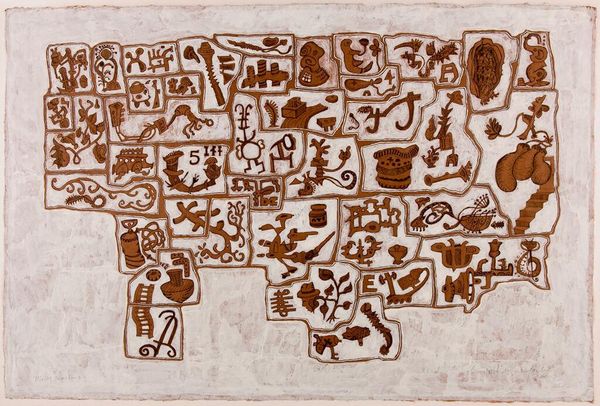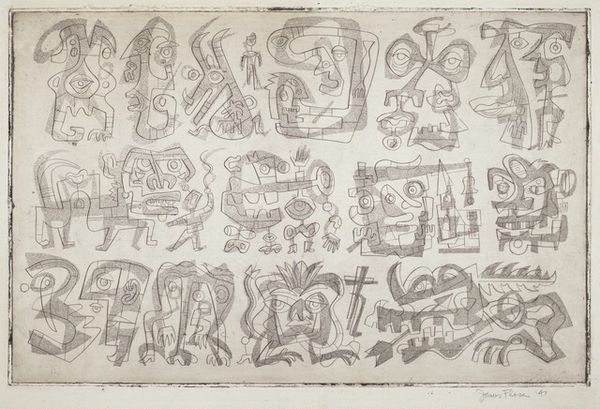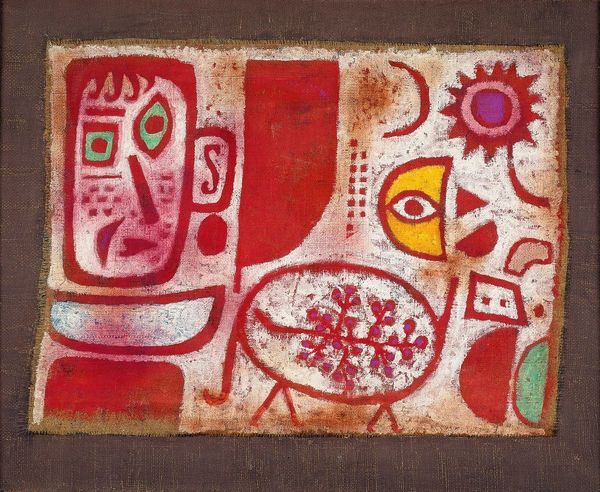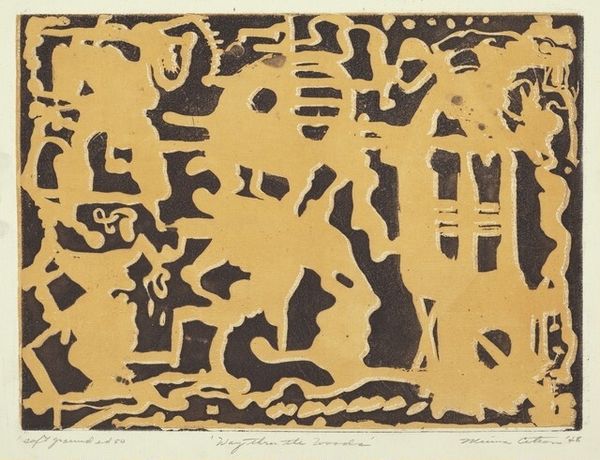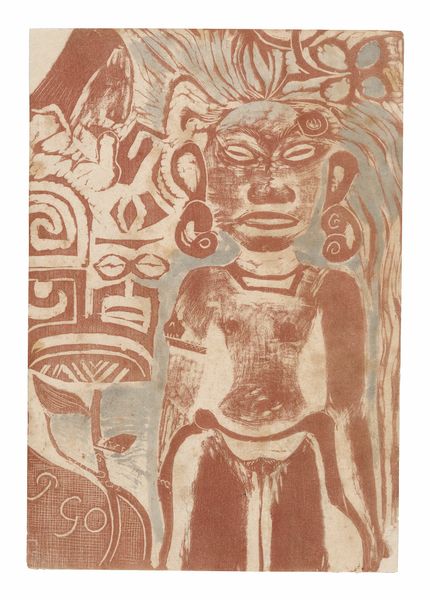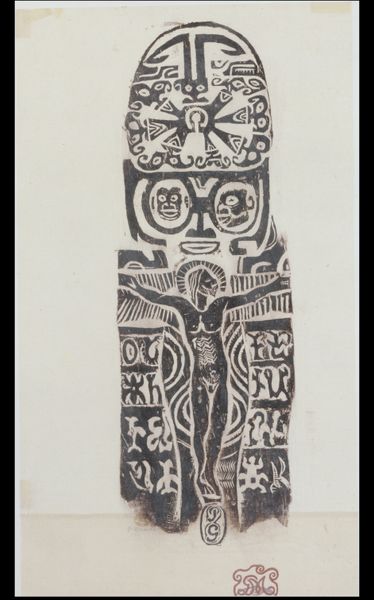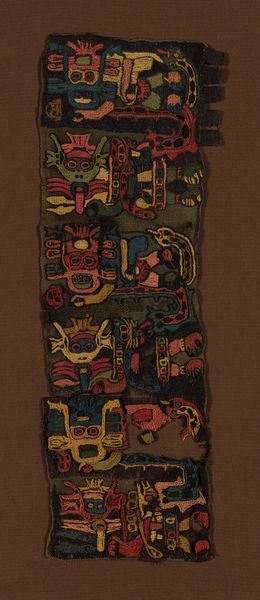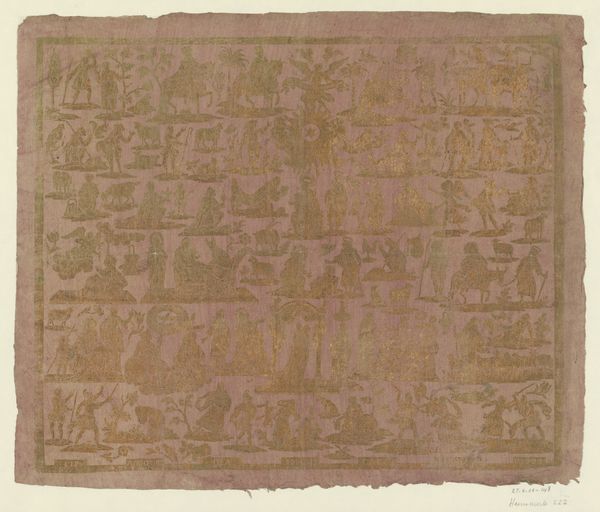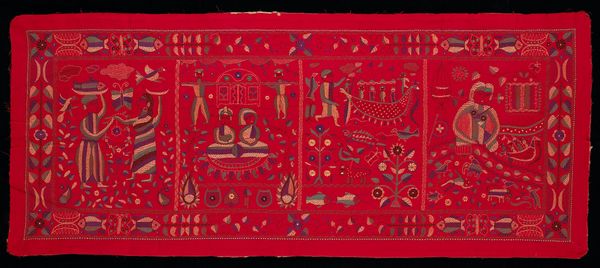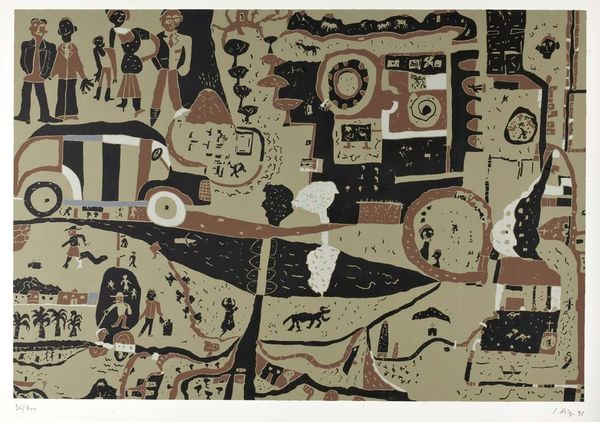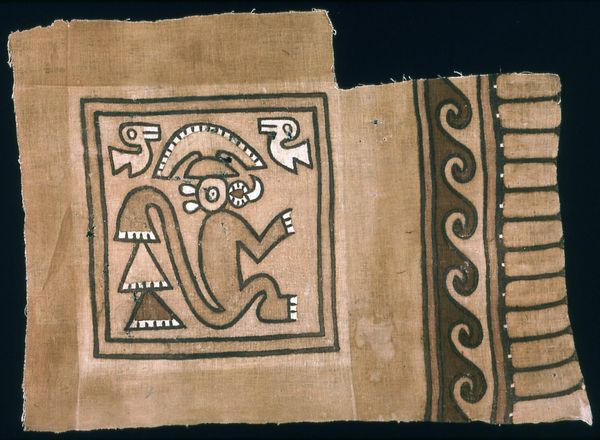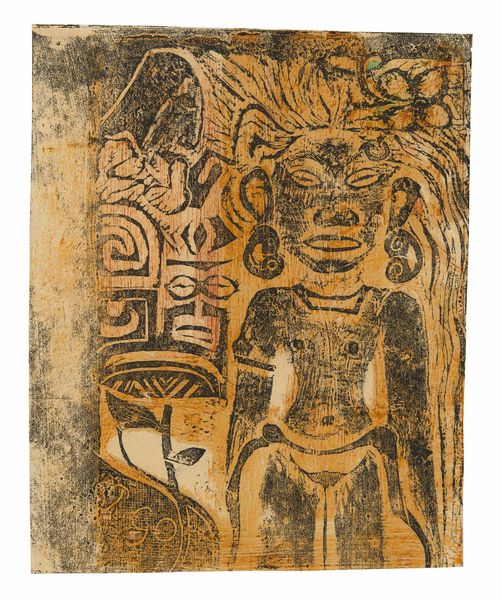
#
organic
#
ink painting
# print
#
figuration
#
coloured pencil
#
line
#
watercolour illustration
Copyright: National Gallery of Art: CC0 1.0
Curator: This intriguing print before us is John Livingston Ihle’s “Animal Kingdom,” created in 1958. Ihle uses techniques like etching, aquatint, and engraving. It is incredible how these various processes of printmaking have converged here. Editor: The immediate impression is…primitive. It's incredibly layered. It feels as though I'm observing a very old archaeological site that exposes distinct levels or perhaps cultures, all at once. The color is of aged patina. Curator: Ihle was very interested in the intersection between indigenous cultures and modernist styles, wasn't he? Look at how those stylized animals and figures almost recall Northwest Coast art while also speaking to a broader mid-century aesthetic. His work reflects a deep engagement with pre-Columbian art history and cultural memory. Editor: And observe the process! These intricate lines, rendered using labor-intensive etching, aquatint and engraving techniques, clearly evidence Ihle's masterful craft. This wasn’t quickly done; the hand and the method were intensely involved. We see his deep labor etched into the printing plate to then be etched onto the paper! Curator: Absolutely. And I find myself wondering about the consumption of images like these during the 50s. Who was the intended audience? How did Cold War politics affect the reception of a work drawing from, and seemingly celebrating, Indigenous aesthetics? Editor: Right! You can almost feel the intense manual work embedded within its construction, pushing against mass-produced imagery during the time it was created. This evokes ancient creation but simultaneously offers social commentary for contemporary life in mid-century America. Curator: Seeing this piece in the museum collection allows us to appreciate the artist's vision while encouraging viewers to understand our connections with cultures. We must always be aware of the public and the place of art. Editor: Well said. It's amazing how exploring a seemingly "primitive" method encourages modern conversations about both the processes of labor and visual meaning.
Comments
No comments
Be the first to comment and join the conversation on the ultimate creative platform.
